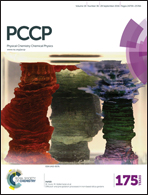A perspective on structural and computational work on collagen
Abstract
Collagen is the single most abundant protein in the extracellular matrix in the animal kingdom, with remarkable structural and functional diversity and regarded one of the most useful biomaterials. Etymologically, the term collagen comes from Greek kola ‘glue’ and gen ‘giving birth to’. Thus, it is not surprising that the various collagens and the structures they form all serve the same purpose, to help tissues withstand stretching. Among the functions the various collagens are involved in are cell adhesion and migration, tissue repair, scaffolding and morphogenesis. Thus knowledge about the structure and properties of collagen, how they change depending on the nature of the local environment as well as the nature and specificity of collagen interactions with its partners is central to discerning the role of collagen in medical applications such as imaging, drug delivery and tissue engineering, and in the design and construction of synthetic collagen-like materials for tools in biomaterial science and nanotechnology. The main focus of this perspective is to review the molecular and packing structures of collagen and the computer simulations work performed up to now to further highlight the significance of collagen.

- This article is part of the themed collection: PCCP Perspectives

 Please wait while we load your content...
Please wait while we load your content...